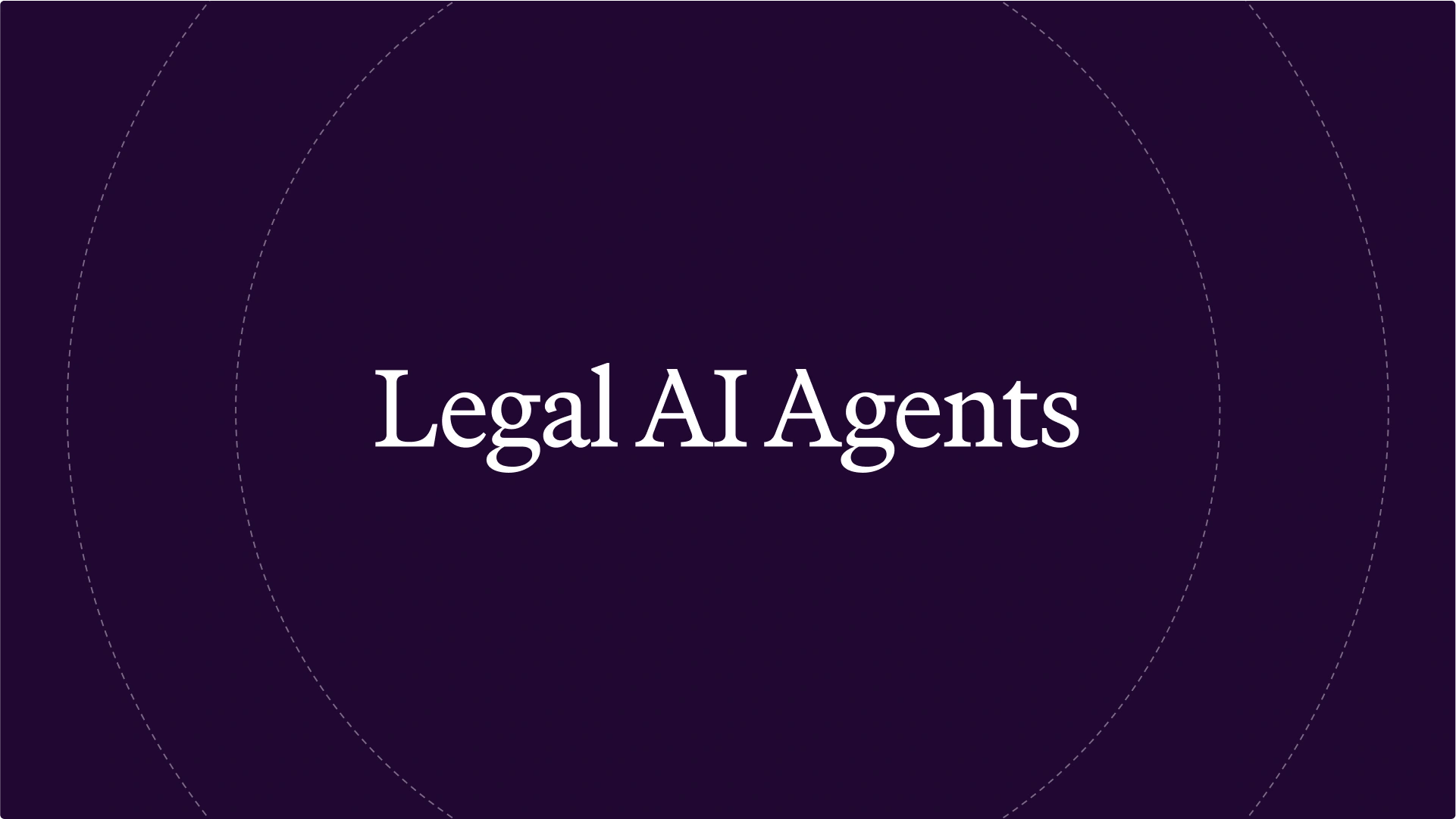.svg)
Product
Solutions

Featured:
Read how a Cincinatti hospital system slashed contract review time by 75% with LegalOn.
Resources
Company


Legal teams worldwide spend dozens of hours each week poring over contracts – examining clauses, spotting risks, and ensuring compliance. This adds up to staggering amounts of time: LegalOn’s 2025 survey of 286 legal professionals reveals that over half of organizations spend more than two hours reviewing a single contract. For a team reviewing 500 contracts annually at an average of three hours per review, this translates to 1,500 hours—or roughly 188 working days—dedicated solely on contract reviews
This time investment comes at a critical cost, impacting both efficiency and strategic priorities. When skilled legal professionals spend most of their day on routine contract review, they have less bandwidth for strategic work, complex negotiations, and the kind of nuanced legal analysis that truly drives business value. Yet simply accelerating these reviews isn't an option - contracts require careful attention, and mistakes can have serious consequences.
While early AI tools helped analyze documents or assist with research, today's challenges require something more sophisticated. AI agents are on the cusp of a fundamental shift from passive tools to proactive assistants. Unlike traditional automation tools that focus on isolated tasks, AI agents are designed to coordinate multiple steps within a workflow, maintain context across tasks, and adapt to new inputs over time. These systems operate within defined boundaries, proactively handling routine processes while integrating with broader workflows.
AI agents are autonomous systems that operate within defined boundaries, performing tasks and recommending actions based on context and data inputs. Unlike traditional software, which follows rigid rules, AI Agents act as proactive assistants, maintaining context across workflows and suggesting or initiating next steps based on programmed priorities.
Industry leaders and researchers have offered varying perspectives on the definition and capabilities of AI agents:
In legal applications, AI agents do more than flag keywords or analyze clauses. They assess the context of contractual terms, identify patterns across vast document sets, and flag items that may require human review. Over time, their performance improves as through training and feedback from legal professionals, distinguishing them from basic automation tools.
The power of AI agents lies in their autonomy and adaptability. They can process natural language with deep contextual understanding, handle complex decision-making scenarios by evaluating multiple factors simultaneously, and adapt their responses based on new information and user feedback. Most importantly, they maintain a sense of their position within a workflow and identify relevant information at each stage based on predefined parameters. Satya Nadella, CEO of Microsoft, envisions a future where AI agents become the primary interface between humans and computers, understanding user needs and proactively assisting with tasks and decision-making.
However, experts also caution about the limitations and risks associated with AI agents. Yoshua Bengio, a pioneer in AI research, warns that agentic AI systems, which operate independently of human input, could pose significant dangers if not properly regulated. He emphasizes the need for national regulations to ensure AI safety and prevent the hasty deployment of such models.
In the legal domain, the integration of AI agents into contract review and negotiation processes introduces both opportunities and challenges. While AI agents can enhance efficiency by automating routine tasks, they require careful human oversight to ensure accuracy and compliance with legal standards. The National Law Review highlights that automating legally binding documents without human supervision can expose businesses and consumers to significant risks.
The most successful implementations of AI agents in legal practice embrace these limitations rather than trying to overcome them. By designing systems with human oversight as a core feature rather than a limitation, legal teams can create workflows that combine the best of both worlds: the AI agent's ability to process vast amounts of information and maintain consistent attention to detail, and the human lawyer's expertise in complex reasoning and nuanced judgment.
This "human-in-the-loop" approach isn't just a safeguard - it's a fundamental design principle that acknowledges the complementary strengths of human and artificial intelligence. The AI agent handles the routine and repetitive aspects of contract review, while legal professionals focus on strategic decisions and complex legal analysis. As the system is refined through feedback and additional training, this partnership becomes increasingly effective, but always with the human professional as the ultimate decision-maker.
The legal profession has emerged as a prime sector for AI agent implementation. What makes legal practice uniquely suited for AI agents is its combination of high-volume routine tasks and the need for sophisticated pattern recognition across complex documents. As law departments and firms face growing pressure to improve efficiency while maintaining high standards of accuracy, AI agents have the potential to transform how legal work gets done - not by replacing lawyers, but by serving as intelligent partners in the review and analysis process.
Contract Review and Management
In contract review, we believe that AI agents can serve as intelligent assistants that streamline and accelerate the entire document lifecycle. They would automatically route contracts to appropriate specialist reviewers based on type and complexity, while conducting preliminary analysis and markup to flag potential issues. In the future, these agents can help monitor deadlines and commitments through automated obligation tracking and support version control by identifying amendments and modifications throughout the contract lifecycle.
eDiscovery
AI agents could potentially transform the eDiscovery process by efficiently processing vast collections of emails, messages, and documents at scale. Through smart filtering capabilities, they would identify privileged content and sensitive information and track document relationships and chronological sequences. These agents may also organize evidence systematically, creating logical groupings and detailed summaries that streamline the litigation team's workflow.
Legal Research
In legal research, AI agents could conduct comprehensive multi-source analysis, simultaneously searching across case law, statutes, and regulations to identify relevant precedents. They would recognize patterns in judicial decisions and regulatory interpretations, validate citations for accuracy, and match precedents based on both factual and legal similarities.
Document Analysis
AI agents would bring efficiency to document analysis through automated categorization of legal materials based on type, importance, and relevance. They could extract key information from complex documents, identify critical clauses and terms while flagging unusual provisions or missing elements. Through cross-reference checking, these agents would ensure consistency across related documents, maintaining the integrity of legal documentation.
Risk Assessment
In risk assessment, AI agents could leverage predictive analytics to evaluate potential litigation outcomes based on historical data patterns. They would continuously monitor regulatory changes and their potential impact on legal operations, while quantifying potential legal exposure across different scenarios through sophisticated risk scoring. Their early warning systems can identify potential issues before they escalate, allowing legal teams to take proactive measures.
Client Communication
AI agents have the ability to streamline client communication by managing initial screening processes and directing inquiries to appropriate resources. They would maintain consistent client engagement through automated status updates on ongoing matters and handle routine questions about legal processes.
To fully realize the potential of AI agents in legal practice, implementation must be guided by a robust supervisory framework. Developed in alignment with best practices, such as those outlined in Stanford Law research, this framework ensures that AI agents operate responsibly, effectively, and within clearly defined boundaries:
This framework emphasizes the importance of human oversight and collaboration, positioning AI agents as supportive tools that complement—rather than replace—human expertise.
Contract review and management represents one of the most impactful applications of AI agents in legal practice, offering significant benefits across the contract lifecycle. The key innovation lies in how these agents can serve as supervisory systems, coordinating between automated processes and human expertise while maintaining clear accountability at every stage.
For pre-signature activities, an AI agent would serve as an initial line of analysis, flagging issues that require human expertise while handling routine aspects of review. This would enable legal professionals to focus their attention on strategic decisions and complex negotiations rather than spending hours on preliminary review.
Initial Processing and Routing
Analysis and Risk Assessment
Communication and Coordination
In post-signature management, the agent would transition into a monitoring role, tracking obligations and changes while ensuring nothing falls through the cracks.
Obligation Management
Document Control and Compliance
Process Automation
As legal departments face mounting pressure to review contracts faster while maintaining accuracy, AI agents can become a critical bridge between traditional manual review and fully automated solutions. By working alongside dedicated contract review software, these AI agents can help transform what was once a purely human process into an augmented workflow that maximizes both efficiency and expertise. The integration is particularly valuable as contract volumes grow and legal teams seek ways to scale their capabilities without increasing headcount.
AI agents can complement traditional contract review processes by:
Providing initial screening and issue spotting
AI agents can serve as the first line of review, rapidly analyzing contracts to identify potential risks, non-standard terms, and compliance issues. They can leverage purpose-built legal models trained specifically on contract language to catch nuances that general AI might miss. This initial screening allows legal teams to focus their attention on the most critical aspects requiring human judgment.
Automating routine review tasks
AI agents can handle time-consuming manual tasks like comparing contract versions, checking against playbooks, and flagging deviations from standard templates. This automation can reduce review time from hours to minutes, particularly beneficial for high-volume contract types like NDAs, service agreements, and purchase orders.
Supporting human reviewers with AI-powered insights
Beyond basic automation, AI agents could provide contextual insights by drawing from vast databases of legal knowledge and precedents. They would offer specific recommendations for clause modifications, suggest alternative language, and provide practice notes based on industry standards. This augments human expertise rather than replacing it, helping lawyers make more informed decisions faster.
Maintaining consistency across review processes
AI agents could help standardize review practices by consistently applying organizational playbooks and policies across all contracts. They would ensure that every contract review follows the same rigorous standards, whether handled by senior attorneys or junior staff. This systematic approach reduces errors and variations in contract handling.
The synergy between AI agents and contract review creates a comprehensive solution that combines automated efficiency with human expertise. While AI agents handle the heavy lifting of initial review and routine tasks, human legal professionals retain control over strategic decisions and complex negotiations, creating a more efficient and effective contract review process. Learn more about how AI contract review software is speeding up contract review.

